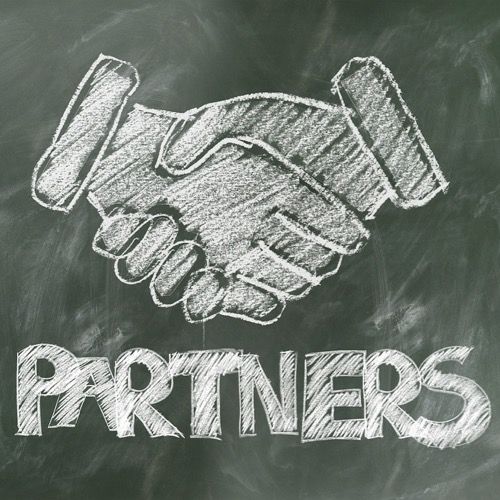
Ecosystems & You: Selling More With Key Partners
Leveraging your business ecosystem as a salesperson
Partners either suck, or they’re good.
-Me
Usually, organizations build a channel program to sell THROUGH partners (read on building a Channel Program here). But as an individual sales person or manager, your ecosystem is filled with key relationship opportunity for a sell WITH or referral partner. Partners can be a huge driver for expanding your network, referrals, and account growth. The best sales people always have a network of high quality partners that are a constant source of leads and opportunities. Here are some quick steps to leveraging your company’s network of business partners to grow your sales footprint.
Step One: Think on the concept of business ecosystems.
To succeed in engaging your organization’s ecosystem resources, you must first have a firm grasp on how ecosystems function. The premise of an ecosystem is “1+1=3,” or the mutually beneficial cooperation of two entities. In any business partnership, the end goal is to provide more value to the customer, but sales teams often fail to remember this. When they approach other businesses for referrals or aid, they don’t provide anything in return. Just like any relationship, it needs to be a two way street. To think only of one’s own interests is selfish and may result in a few short-term gains, but wasted momentum. It can drive away the other businesses in your ecosystem, preventing you from reaping the wider benefits that come from building and maintaining relationships with them. Ecosystems that are mutually beneficial are built on a foundation of mutual respect. Regardless of how long your partnership with another company in your field lasts, you should always make an effort to ensure that both parties see the collaboration as beneficial.
Step 2: Understand your company’s industry and operating environment
Step out of our sales shoes and set meetings with the broader groups within your organization. It’s important to know the different types of companies your customers work with during the purchasing process. To get started, contact the partnerships group at your company. Inquire as to their current and ideal partner profiles, and the types of partners they work with. There are many different kinds of partners, including venture capitalists and media outlets, but the most common are technology, services, solution, agency, affiliate, and referral partners.
Gather as much data as possible from your partnerships & alliance group, and then analyze your perfect ecosystem targets in detail. You should also include the people your clientele go to for help and guidance in your company’s customer profiles. Create a diagram of all the resources your customers use to learn about, evaluate, and ultimately purchase your products and services. That will provide you with a bird’s-eye view of your company’s broader operational ecosystem.
After you have a clear picture of the factors that have a direct impact on your customer, you should delve deeply into the goals of the various types of organizations that make up your ecosystem. By applying this knowledge, you’ll be able to forge connections that benefit everyone involved.
More targeted and efficient communication is the result. Similar to how you would connect with potential customers, when reaching out to a partner in your business ecosystem, you should include a personalized message that explains how they will benefit from working with you.
Additionally, a business ecosystem map can assist you in setting priorities. You should have an idea of which groups are worth your time and energy. Not all collaborations are created equal, and knowing which ones provide the most benefit requires a well-thought-out business ecosystem map.
The first step in locating those potentially helpful connections is pinpointing your greatest areas of need. Say, for the sake of argument, you are a sales director at a SaaS startup that has no trouble closing but does has a light marketing lift, and trouble generating leads. Working with consulting partners in the area may lead to opportunities within existing customers.
You can prioritize where to put your efforts by first identifying your needs and then learning how other groups can support you.
Step 3: Get the word out and start working together.
As I mentioned, reaching out to consulting organizations that focus on your target verticals is a good place to start if you want to increase the quality of your leads and raise awareness of your brand. Referral programs can help spread the word about your business and generate leads by sharing revenue.
Your company may already have an referral program in place; if not, you can suggest creating one.
When properly managed, referral programs increase the exposure to your company’s products or services and generate a steady stream of high-quality leads. Referral participants are advocates for your brand who will promote your product or service for a financial reward.
However, the most effective referral partners care about more than just making a profit for themselves. They can be inside connections that grow and expand your sales. Find partners that fit in with your brand’s values and can effectively represent your business. You do not want your SDRs to have to sift through a large volume of low-quality leads generated by poor partner efforts.
Partners can be catalysts for explosive growth. Beware: choose quality over quantity. Use your sales “spidey” sense to cull the weak ones early and focus on the champions. Happy partnering!
sales tips, using partners to grow, partner strategy, selling with partners